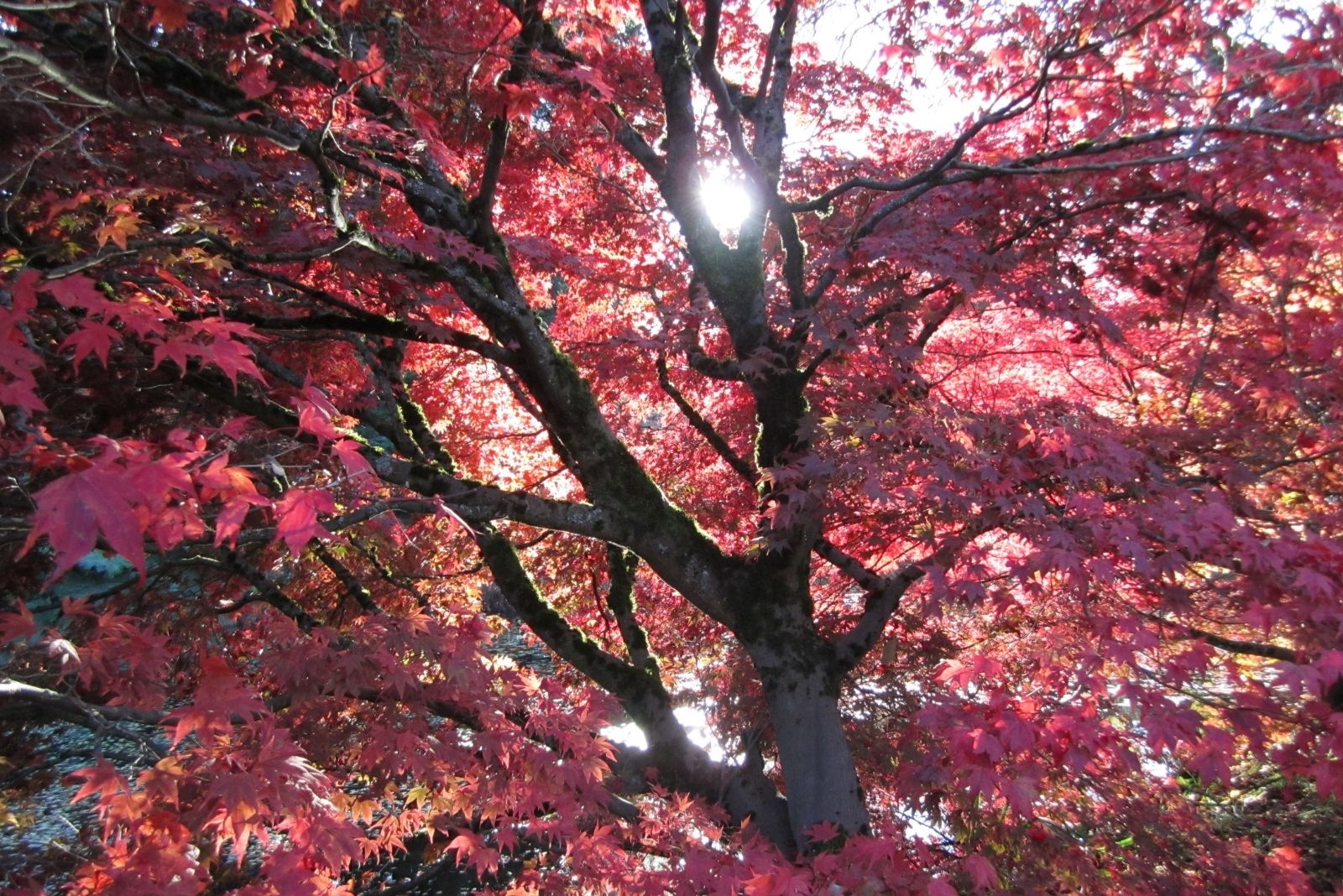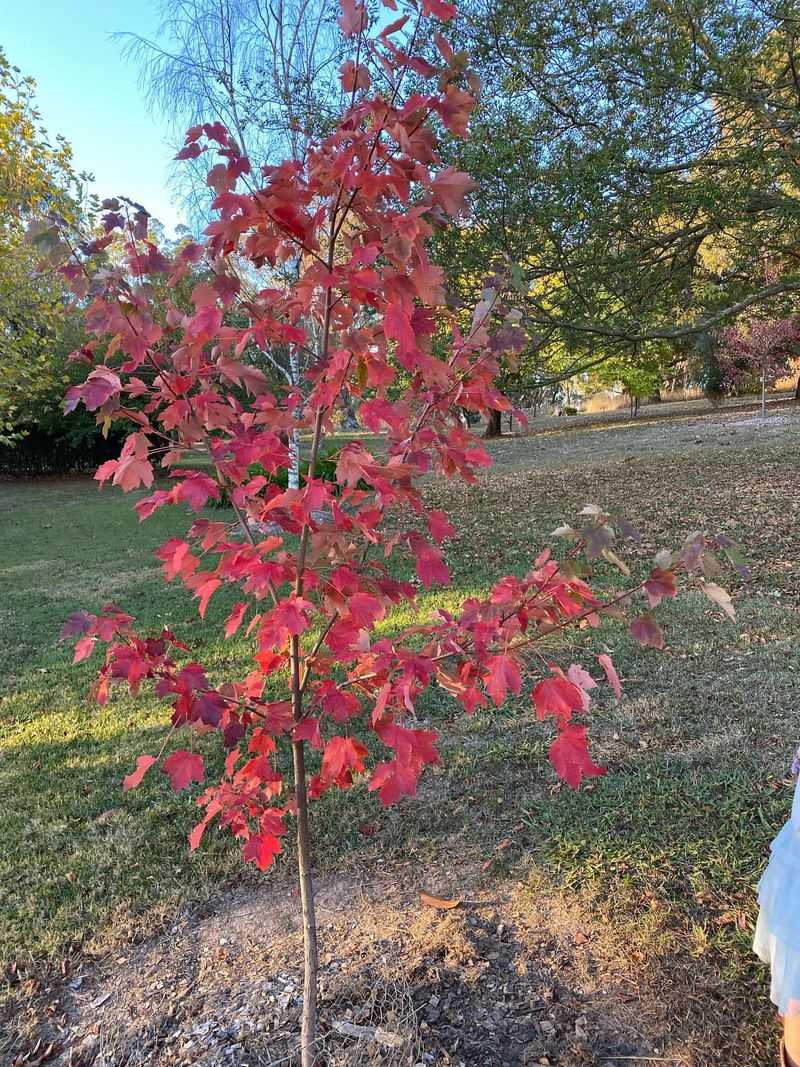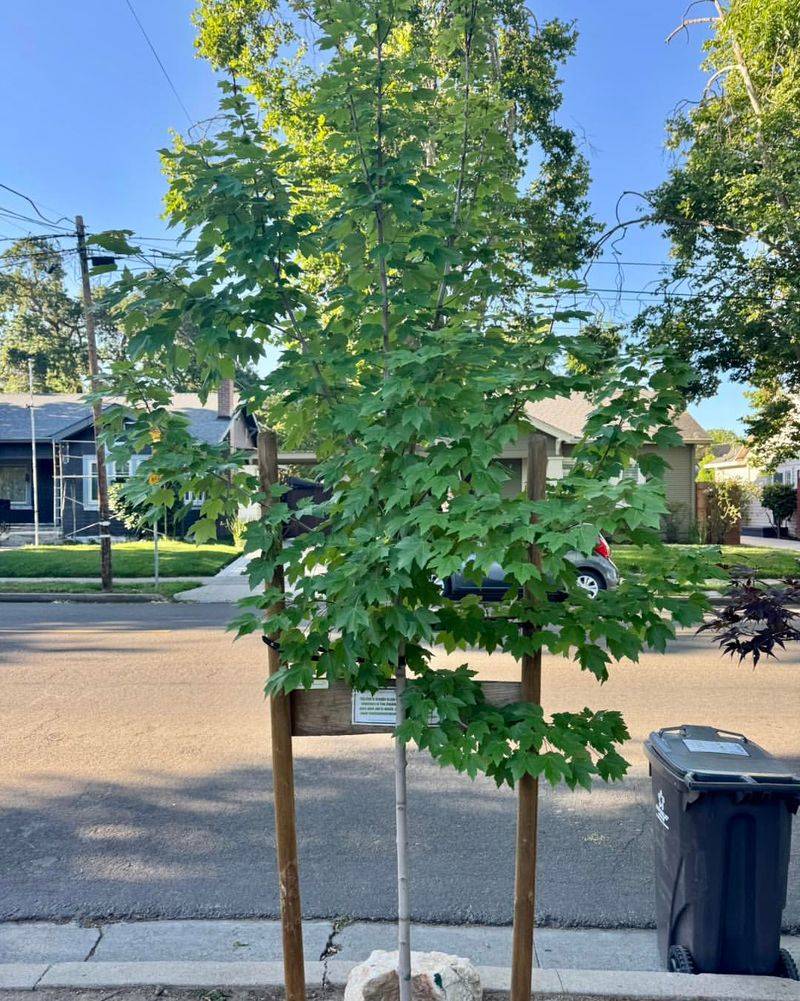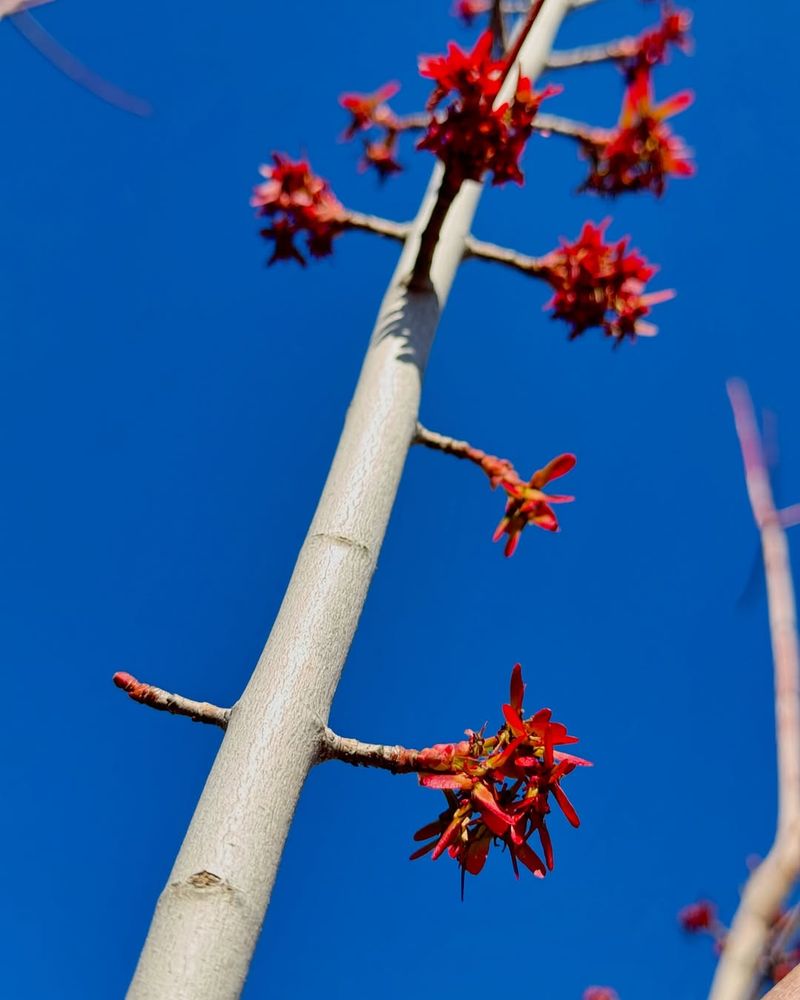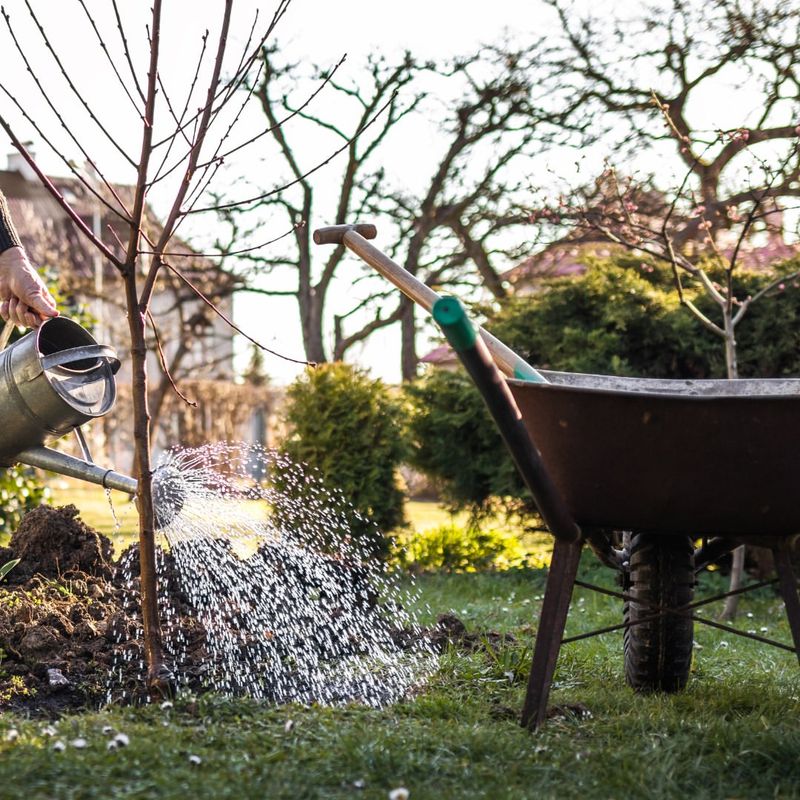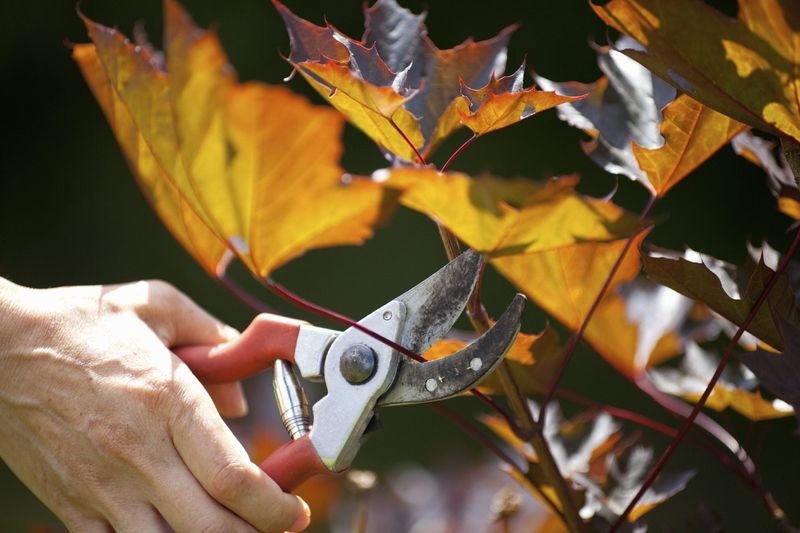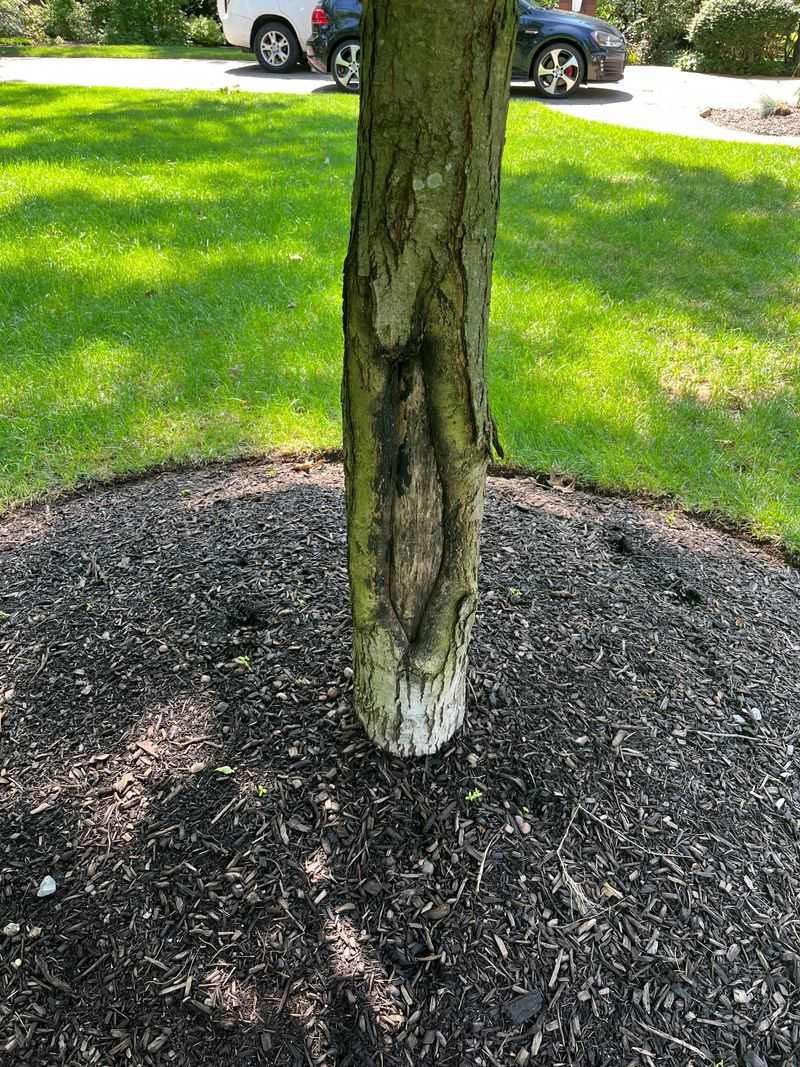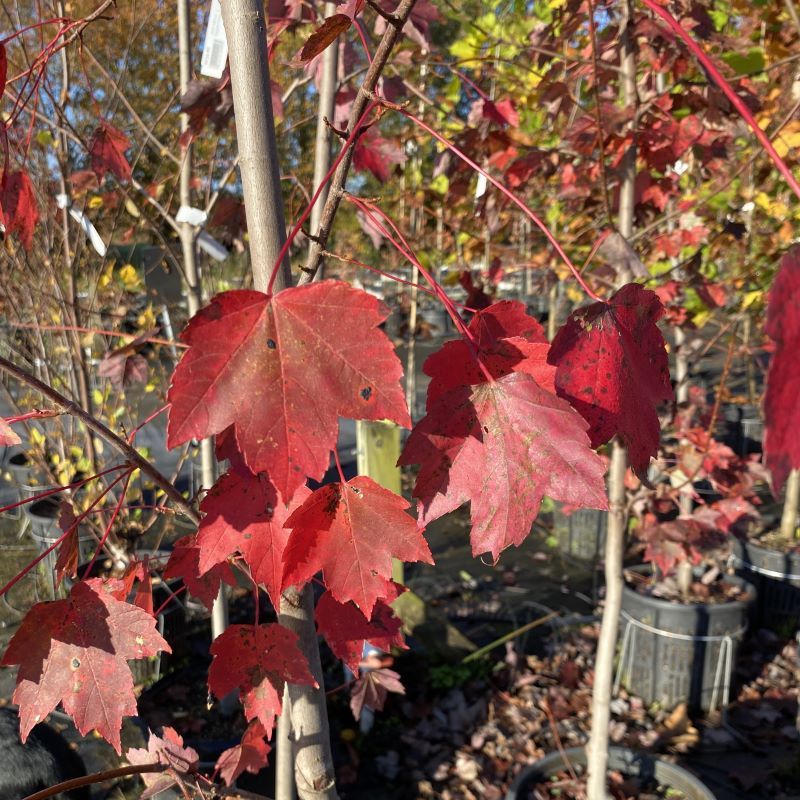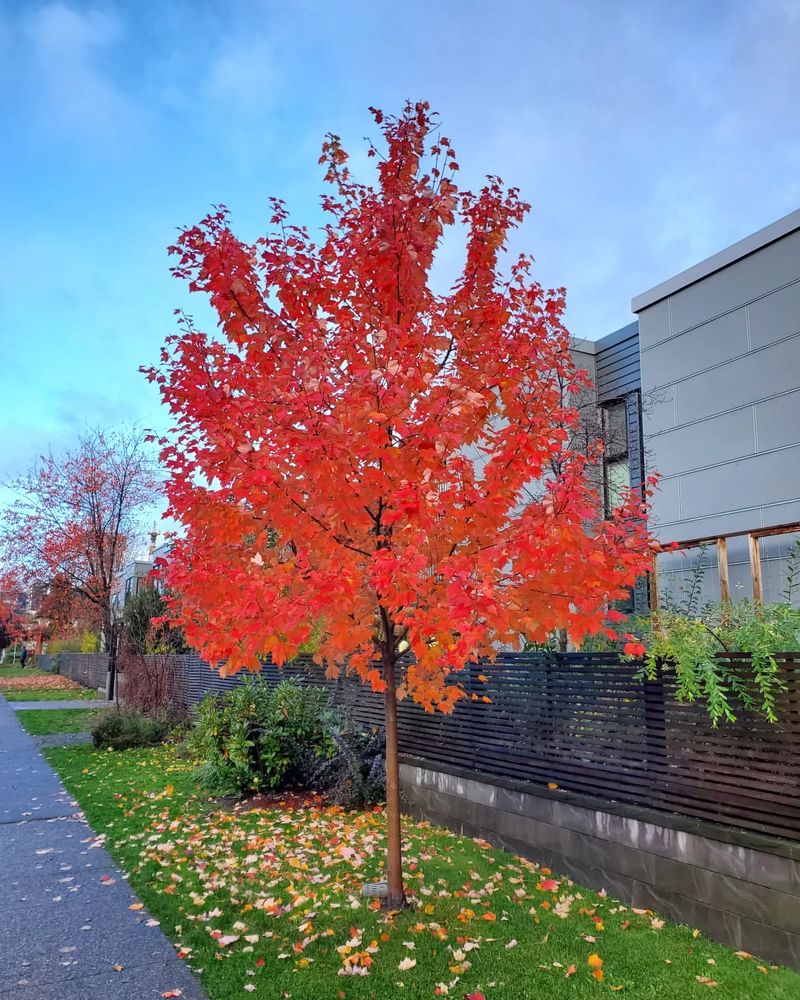The October Glory maple is a stunning addition to any New Jersey landscape, famous for its brilliant red fall foliage that lights up yards when autumn arrives. These trees thrive in our Garden State climate when given proper care and attention.
Whether you’re a seasoned gardener or just starting out, these tips will help your October Glory maple flourish in New Jersey’s unique growing conditions.
1. Choose A Sun-Drenched Spot
October Glory maples need at least six hours of direct sunlight daily to develop their signature fall color. In New Jersey’s varying landscape, south-facing locations often provide ideal light exposure while offering some protection from harsh afternoon sun.
Our state’s hot summers and cold winters create perfect conditions for these trees to develop their spectacular autumn display. The right amount of sunlight triggers the chemical processes that produce those famous red leaves.
I planted mine where it catches morning sun but gets afternoon shade, and the fall color has been consistently better than my neighbor’s tree that sits in partial shade all day.
2. Get Your Soil Right
These maples prefer slightly acidic soil with good drainage. Test your soil pH first—most New Jersey soils naturally range between 4.5-7.0, which works well. Add organic matter like compost to improve drainage and nutrient content.
Our state’s clay-heavy soils in many regions can cause problems for maples. If you have heavy clay, consider creating a slight mound when planting to prevent root rot during our wet springs.
After struggling with poor growth in my clay soil, I amended with compost and pine bark, and the difference was remarkable. My October Glory now puts on nearly two feet of growth each year.
3. Plant In Early Spring Or Fall
Timing matters enormously in New Jersey. Plant your October Glory maple in early spring after the final frost or in early fall (September to mid-October) before the ground freezes. This gives roots time to establish before extreme temperatures hit.
Our state’s distinct seasons create perfect planting windows. Spring planting works well in South Jersey’s milder climate, while North Jersey gardeners might prefer fall planting to avoid summer heat stress.
I’ve planted maples in both seasons, but my fall-planted trees seemed to settle in with less shock. The cooler temperatures and reliable rainfall of New Jersey autumns gave them a gentle start.
4. Water Deeply And Consistently
Young October Glory maples need consistent moisture. Water deeply once weekly for the first two years, providing about 15-20 gallons each time. During drought, increase to twice weekly, focusing on slow, deep watering.
New Jersey’s rainfall patterns can be unpredictable, with summer dry spells common. A soaker hose or drip system works wonderfully for consistent moisture without wetting the leaves, which can promote fungal issues in our humid climate.
During last summer’s July drought, I used a five-gallon bucket with tiny holes drilled in the bottom placed near the trunk. This slow-release method saved my young maple when neighbors lost trees.
5. Feed With Balanced Fertilizer
Apply a slow-release, balanced fertilizer (like 10-10-10) in early spring before new growth appears. Avoid fertilizing after July, as late-season feeding can prevent the tree from properly hardening off for winter.
New Jersey’s growing season is perfect for October Glory maples, but our soils sometimes lack key nutrients. A soil test from Rutgers Cooperative Extension can pinpoint exactly what your soil needs.
My approach is gentle fertilizing—half the recommended dose in spring, and a light application of compost in fall. When I tried stronger fertilizers, my maple produced excessive leaf growth at the expense of strong branches.
6. Prune With Purpose
Prune your October Glory maple when dormant in late winter. Remove dead, diseased, or crossing branches first, then shape as needed. Never remove more than 25% of the canopy in a single year to avoid stressing the tree.
New Jersey’s windy coastal areas and heavy snow regions require special attention to branch structure. Strong central leaders with well-spaced branches stand up best to our nor’easters and occasional ice storms.
After losing a major branch during a December ice storm, I learned to identify and remove weak V-shaped crotches early. The stronger U-shaped branch attachments have weathered every storm since without damage.
7. Shield Winter Roots
Apply a 3-4 inch layer of mulch in a circle around your tree, keeping it away from the trunk. This protects roots from New Jersey’s freeze-thaw cycles and conserves moisture during summer heat waves.
Our state’s fluctuating winter temperatures can be tough on maples. The temperature might swing from 50°F to below freezing in 24 hours, potentially damaging shallow roots. Mulch provides crucial insulation against these changes.
Wood chips have been my mulch of choice—they break down slowly and feed the soil naturally. The year I skipped refreshing the mulch, my tree showed stress symptoms during the following summer drought.
8. Plant Friendly Neighbors
Surround your October Glory maple with compatible understory plants that won’t compete aggressively for water and nutrients. Native woodland perennials like foamflower, wild ginger, and ferns make excellent companions.
These companions thrive in the dappled shade conditions found under maturing maples. They’re also adapted to New Jersey’s climate and soil conditions, requiring minimal extra care once established.
The woodland garden beneath my maple has become my favorite landscape feature. The spring ephemerals bloom before the maple leafs out fully, providing two distinct seasons of interest from the same garden space.
9. Monitor For Potential Problems
Watch for signs of trouble like leaf scorch (brown edges), powdery mildew (white powder on leaves), or verticillium wilt (sudden branch dieback). Early detection means easier treatment, especially in New Jersey’s humid climate where fungal issues can spread quickly.
Japanese beetles and gypsy moths are common pests in our region. Inspect leaf undersides regularly during summer months when these insects are most active. Horticultural oil sprays in early spring can prevent many issues.
Last summer, I noticed some leaf spots developing after a particularly rainy June. Improving air circulation by thinning a few branches stopped the problem before it could spread throughout the tree.
10. Plan For Future Growth
October Glory maples grow quickly, reaching 40-50 feet tall with a 35-foot spread. Plan accordingly when planting near structures or power lines. Consider underground utilities and future landscaping projects before selecting your planting spot.
In New Jersey’s dense suburban areas, space is often at a premium. These trees need room to develop their full, rounded shape. The mature spread can be surprising—I’ve seen beautiful specimens in parks across Mercer County that demonstrate their true potential.
The tiny sapling I planted 15 years ago now towers over my two-story house. Had I known its true growth rate, I would have positioned it another ten feet from the driveway to avoid future conflicts.

